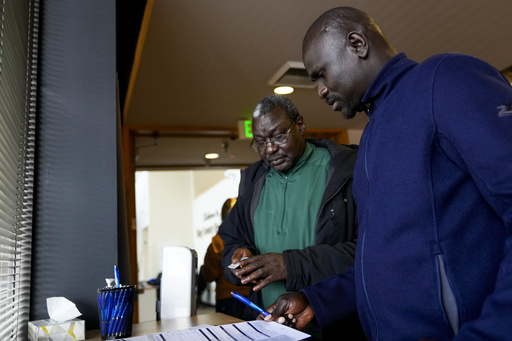
In the recent presidential race, shifts within various demographic groups played a critical role in Donald Trump’s successful bid for a return to the White House. The Republican candidate was able to maintain his established voter base, comprising predominantly white individuals, those lacking a college degree, and older voters. However, he also made notable inroads with younger voters, as well as Black and Hispanic males, based on extensive data collected from over 120,000 voters across the nation.
On the other hand, Vice President Kamala Harris, representing the Democratic camp, managed to make slight gains, particularly with white urban males possessing college degrees. Unfortunately for her, these gains did not compensate for losses in other areas.
Trump saw an increase in his support among younger voters, who became a more substantial segment of his coalition compared to the previous election cycle. While he captured slightly over half of those aged 45 and older, Harris achieved a similar share among voters under 45. The demographics worked in Trump’s favor, as voters over 45 represented about 60% of the electorate in the 2024 election.
In terms of older voters, Trump retained much of his support compared to the 2020 election, but he also registered modest yet impactful gains among younger voters. Previously, he attracted 40% of those under 45, while this time around, his support climbed to nearly 50%. Particularly among the youngest demographic, aged 18 to 29, Trump saw a significant rise in their support, with 46% voting for him compared to just 36% previously.
Moreover, Trump maintained strong backing from voters without a college degree. Roughly 60% of his supporters fell into this category, contrasting with about half of Harris’s base. Overall, the majority of voters in this election did not hold a college degree, and Trump won 55% of this group, while Harris garnered about 40%. This represented a noticeable decline in support for Democrats; whereas Biden was nearly even with Trump among non-college-educated voters in 2020, he managed only 47% of their votes this time.
Trump’s advancements stemmed mainly from non-white men and younger voters without a college degree trending towards his platform. Additionally, he made some headway with non-white women lacking a college degree compared to prior elections. Conversely, Harris maintained President Biden’s level of support among college graduates, who constituted 44% of the voting population. A majority of this educated group favored Harris, but her appeal fell short due to a failure to capture adequate support among those without higher education.
While white voters still made up a substantial portion of Trump’s coalition, he attracted a more diverse voter base compared to four years ago due to his success with targeted groups. Approximately three-quarters of the electorate was white, with no significant shifts in voting patterns seen at the national level. Nonetheless, Trump made modest progress among Black and Latino voters, each group comprising around 10% of the electorate.
In the latest results, about 80% of Black voters sided with Harris, a decrease from the approximately 90% who backed Biden previously. Similarly, Harris’s support among Hispanic voters slightly declined, where just over half opted for her, compared to the 60% kicking in for Biden.
One of Trump’s significant strides came from increasing his support among younger Black men, a demographic crucial for Democratic candidates. About 30% of Black men under 45 chose Trump, a notable increase from 2020. Young Latino males also showed greater openness towards Trump’s campaign, with fewer than half supporting Harris—a drop from Biden’s 60%.
In suburban regions, Harris narrowly edged out Trump, but the latter’s strength in rural areas remained intact, much like the 2020 election. Around 45% of voters identified as suburban; among these, approximately half supported Harris, while 46% leaned towards Trump. Trump’s dominance persisted in small towns and rural areas, capturing around 60% of that voter base, whereas Harris secured about 60% of urban voters.
Education was an influential factor here as well. Trump slightly increased his foothold among urban voters without a college degree, alongside non-white voters from both urban and rural communities. He also attracted more support from white men without a college degree in cities, with about 60% backing him, compared to only half in the previous election cycle.
However, these gains for Trump were countered by Harris gaining traction with urban white men possessing college degrees. She managed to secure around two-thirds of this demographic, an improvement from approximately half who supported Biden four years prior.
